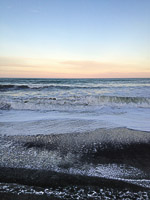[youtube http://www.youtube.com/watch?v=mdoln7hGZYk&w=480]
There’s been much ado about climate sensitivity — the amount of warming we expect for a doubling of CO2 in the atmosphere — in the last month or two. A couple of recent papers, and an expected slight adjustment to the likely range in the upcoming IPCC fifth report ((From 2ºC to 4.5ºC in AR4 to 1.5ºC to 4.5ºC in AR5, with the most likely value still around 3ºC)), has led to speculation that we might have less to worry about, or more time to get emissions cuts in place. It would be great if it were true, but it isn’t. In this excellent short video, Andrew Dessler, professor of atmospheric sciences at Texas A&M university, explains why atmospheric physics means it’s very unlikely that the climate sensitivity can be below 2ºC.
For lots of other reasons why the most likely value remains about 3ºC, see this Skeptical Science post.

 The Prime Minister’s
The Prime Minister’s  What are the prospects for the shorelines of Pegasus Bay as sea level rises, river flows change, and wave directions change? Someone who really knows her erosion from accretion is Sonny Whitelaw, the Hurunui Council’s biodiversity ambassador ((And
What are the prospects for the shorelines of Pegasus Bay as sea level rises, river flows change, and wave directions change? Someone who really knows her erosion from accretion is Sonny Whitelaw, the Hurunui Council’s biodiversity ambassador ((And  The growing disconnect between the NZ government’s promotion of New Zealand as a
The growing disconnect between the NZ government’s promotion of New Zealand as a  Reading
Reading